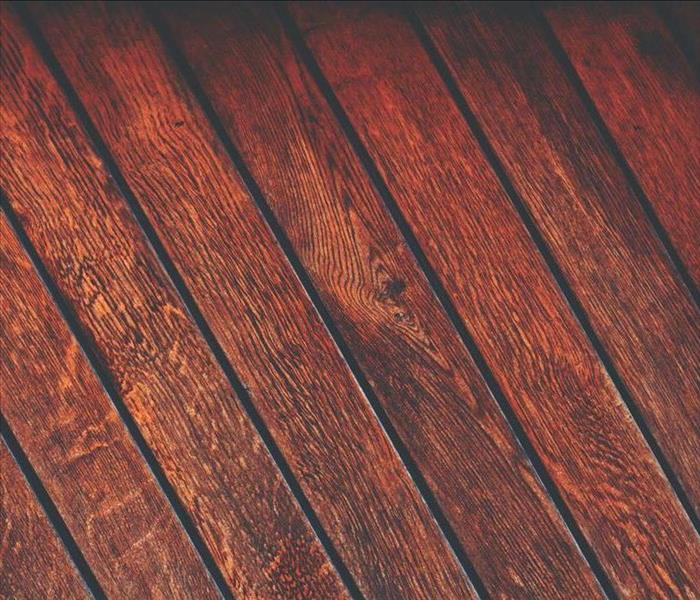Water vs. Wood - What Stands Up Best?
6/9/2020 (Permalink)
There’s a lot of scientific research out there examining the relationship between water and wood. The reason for this is simple – basically everything we build has wood in it, and moisture is everywhere, but most of the issues we encounter with wood or wood products can be traced back to water in some way.
That’s because wood is a hygroscopic material, which is a fancy way to say that it tends to equalize moisture levels with its environment. In a wet environment, wood will take on moisture. In a dry environment, it will give off moisture. You can contrast this with non-hygroscopic materials, like PVC, which do not absorb moisture internally even as it gathers on the surface of the material.
Of course, not all wood is created equal – different types of wood have different properties. If you’re considering using wood for a project but are concerned about moisture or future water damage, read on to learn more about what type of wood you might want to use.
First: what happens to moist wood?
Wood that’s exposed to moisture can suffer from a variety of different problems, including:
- Shrinkage/expansion: shrinking or growing in a certain direction, depending on the grain;
- Warping: shrinkage/expansion in a particular area of the wood, which leads to the wood changing its shape;
- Rot/decay: development of fungi in moist areas, which leads to deterioration.
In other words, wood exposed to moisture can change its shape, change its aesthetic and deteriorate over time. That’s why it’s so important to choose the right wood for your project. Here’s a brief rundown of common types of wood and how they stand up to water damage and moisture.
Mahogany
Mahogany’s a beautiful wood, and it can stand up to moisture extremely well. That’s why they use it to make boats, and that’s a big part of why it’s so expensive. Still, with its gorgeous reddish-brown hue and its serious resistance to warping, welling and shrinking, it’s easy to understand why so many homeowners choose mahogany for their projects.
Walnut
Walnut is also a popular choice for similar reasons. It’s easy to work with, so people often use walnut for things like furniture and cabinets, but it stands up strong to shrinking and warping as well.
Teak
Teak is used in a wide variety of places. You can build a ship with teak, you can build a floor with teak, and you can use it for a wide variety of construction projects. No surprise, then, that its known for its ability to resist warping, cracking, decay and rot in the face of moisture.
Oak
Like mahogany, oak is popular for everything from boats to floors. It’s easy to understand why – it’s flexible yet hardy, it finishes well and it can stand up to absorption and warping in the face of moisture.
Cherry
Cherry is popular for its aesthetic – among other things, it reddens when exposed to sunlight, which some homeowners like. Cherry is also highly resistant to warping and shrinking, and it’s a good choice for furniture and cabinets.
Pine
The softness of pine makes it easy to work and a popular choice for many furniture makers. It doesn’t hurt that it also resists shrinkage, swelling and warping when exposed to moisture.
Maple
Maple is used in both flooring and furniture quite often, but it’s not as resistant as mahogany, walnut or oak. Maple is likely to shrink if it is consistently exposed to water or moisture. If you have maple furniture or flooring, make sure that you protect it from humidity as best you can.
Spruce
Spruce is popular for a few specific uses. It’s strong, soft and often used in mills and even in the construction of aircraft. But while it is highly resistant to decay, it can experience shrinkage over time.
Cedar
Soft, reddish cedar is sought out for its uniform texture and often used for fence posts, planks and even furniture. How well does it stand up to moisture? Moderately – its resistant to decay, molding and rot, but tends to shrink and expand over time.
Keep in mind that while some types of wood can stand up to moisture better than others, any amount of water damage is going to be a problem for wood. If you have a water problem at your home or business, call SERVPRO of The Southtowns at 716-646-6684 today!






 24/7 Emergency Service
24/7 Emergency Service